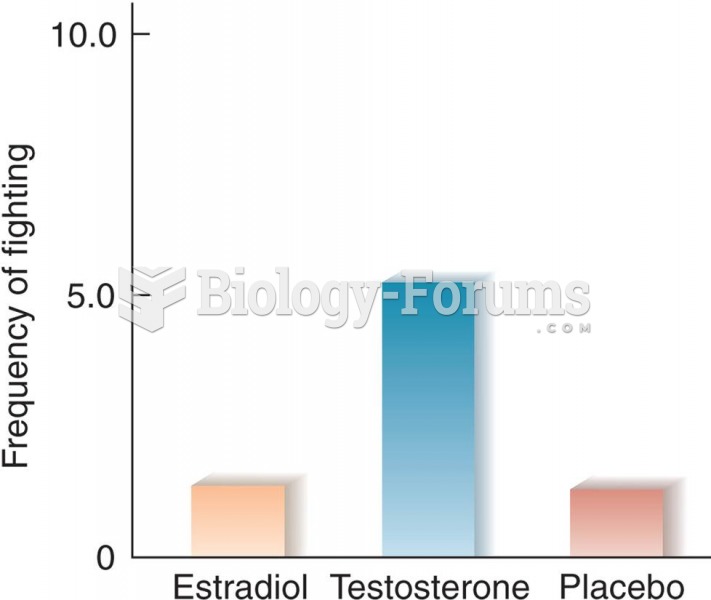Answer to Question 1
Correct Answer: 1, 4
Rationale 1: Urinary retention is a side effect of anticholinergics.
Rationale 2: Hypotension is incorrect because it is a side effect of parasympathomimetic s.
Rationale 3: Increased salivation is incorrect because it is a side effect of parasympathomimetic s.
Rationale 4: Tachycardia is a side effect of anticholinergics.
Rationale 5: Bradycardia is not a side effect of anticholinergics.
Global Rationale: Urinary retention and tachycardia are side effects of anticholinergics. Hypotension is incorrect because it is a side effect of parasympathomimetic s. Increased salivation is incorrect because it is a side effect of parasympathomimetic s. Bradycardia is not a side effect of anticholinergics.
Answer to Question 2
Correct Answer: 2
Rationale 1: Ethosuximide (Zarontin) is an anticonvulsant.
Rationale 2: Nerve agents are chemicals that inhibit acetylcholinesteras e in the synaptic space and can cause toxic parasympathomimetic effects. Atropine or related anticholinergic medications block the attachment of acetylcholine to receptor sites, causing symptoms of the fight-or-flight response, preventing overstimulation caused by harmful nerve agents.
Rationale 3: Ritodrine (Yutopar) is a sympathomimetic commonly used to slow uterine contractions.
Rationale 4: Pridostigmine (Mestinon) is a parasympathomimetic commonly used for myasthenia gravis.
Global Rationale: Nerve agents are chemicals that inhibit acetylcholinesteras e in the synaptic space and can cause toxic parasympathomimetic effects. Atropine or related anticholinergic medications block the attachment of acetylcholine to receptor sites, causing symptoms of the fight-or-flight response, preventing overstimulation caused by harmful nerve agents. Ethosuximide (Zarontin) is an anticonvulsant. Ritodrine (Yutopar) is a sympathomimetic commonly used to slow uterine contractions. Pridostigmine (Mestinon) is a parasympathomimetic commonly used for myasthenia gravis.







